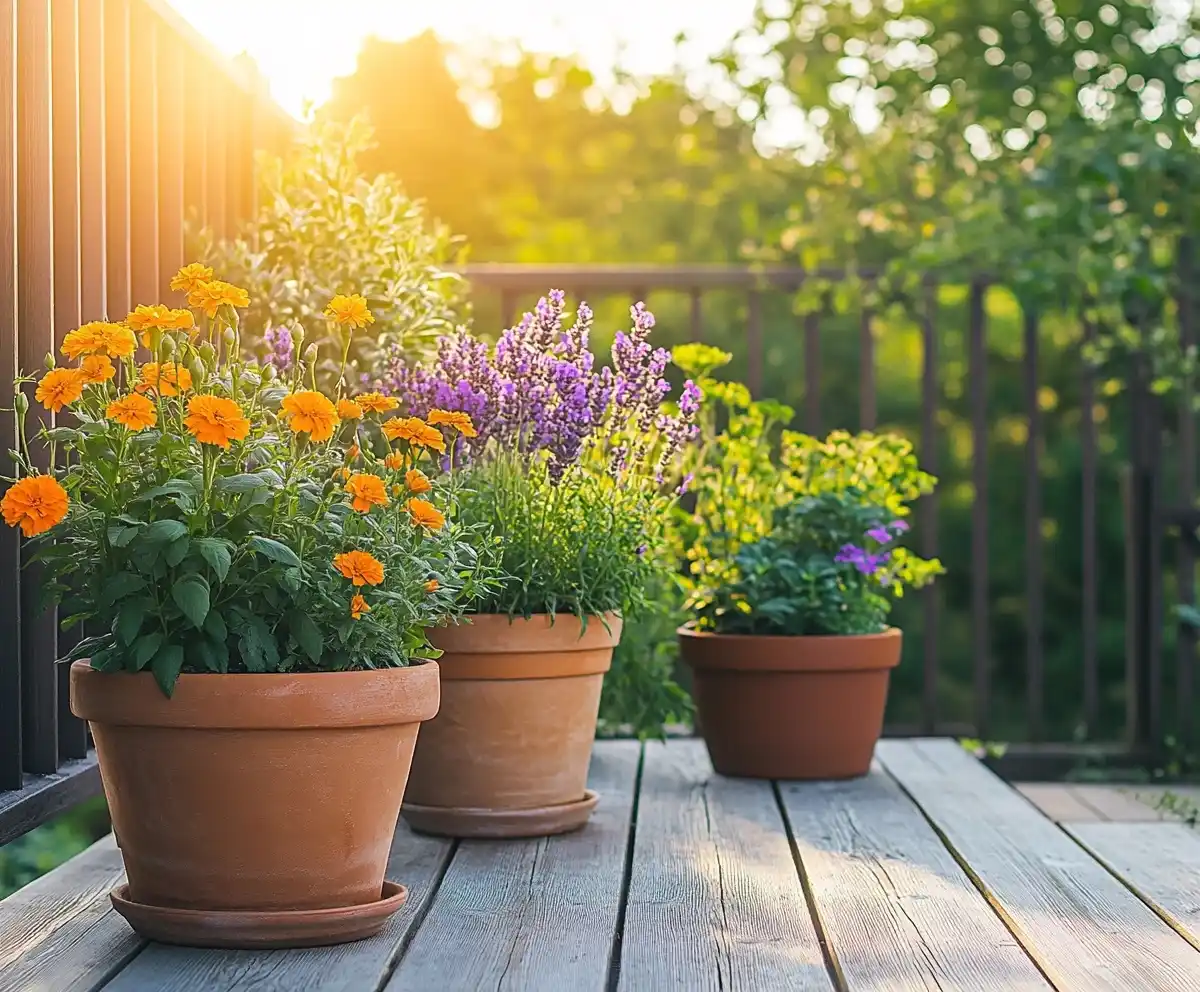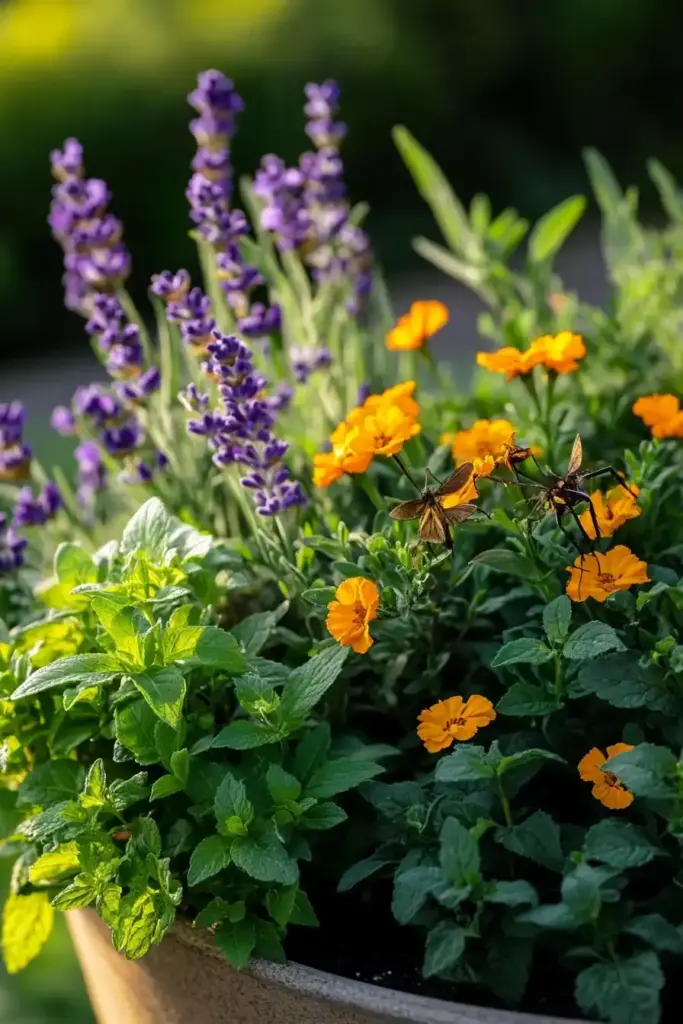Nothing ruins a relaxing summer evening faster than a swarm of buzzing mosquitoes. Fortunately, nature offers us a beautiful, all-natural solution—mosquito repellent plants. By thoughtfully arranging these aromatic and colorful herbs and flowers into a container garden, you can design a living shield that keeps pests at bay while adding beauty to your patio or deck.
In this guide, we’ll walk you through the best mosquito-repelling plants to include, how to arrange them in a sun-loving container, and where to place your planter for maximum effectiveness. The result? A fragrant, functional, and visually stunning garden addition that’ll make your outdoor space more enjoyable all season long.
🪴 Best Mosquito Repellent Plants for Your Patio Garden
1. Marigold (Calendula ‘Bon Bon Bright Yellow’)
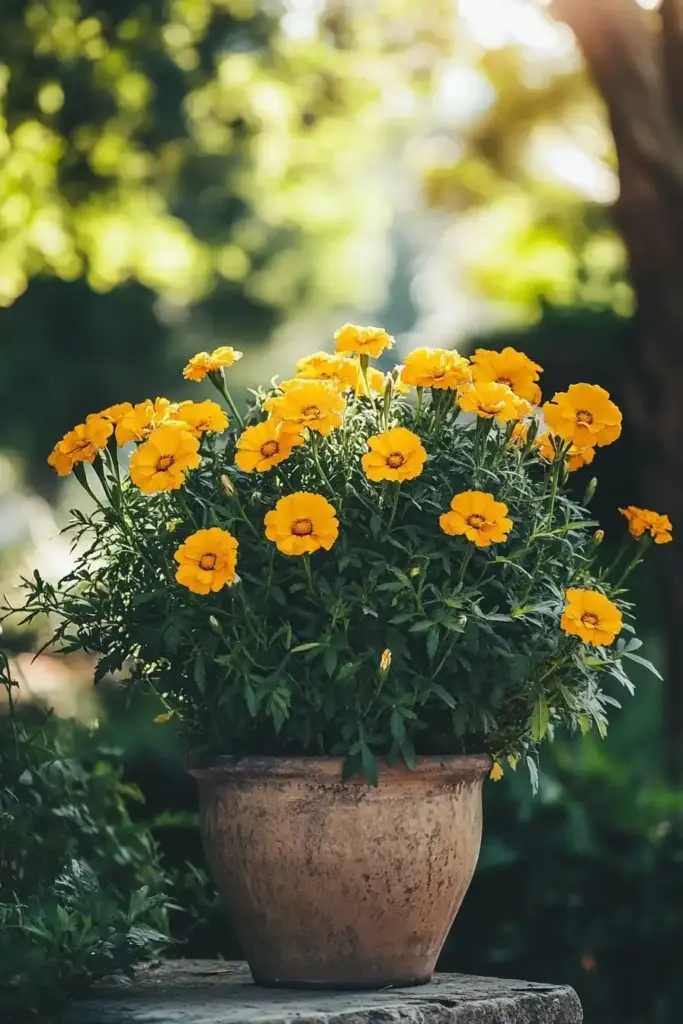
Marigolds are more than just cheerful border flowers—they’re natural mosquito deterrents. These bright yellow blooms contain pyrethrum, a compound commonly found in insect repellents. While they won’t kill mosquitoes, they do a great job of repelling them with their scent.
- Why it works: Strong smell deters mosquitoes
- Planting tip: Grows well in containers, prefers full sun
- Extra benefit: Adds vivid color and compact height (up to 12”)
2. Lavender (Lavandula angustifolia ‘Thumbelina Leigh’)

Lavender is a top contender for mosquito repellent plants thanks to its distinctive fragrance, which is soothing to us but offensive to mosquitoes. This compact variety is perfect for containers and can bloom multiple times a year with proper care.
- Why it works: Fragrance masks attractants mosquitoes follow
- Planting tip: Requires full sun and well-drained soil
- Bonus: Dried lavender can be used indoors as a natural air freshener
👉 Want to dive deeper? Learn how to grow lavender here
3. Pineapple Mint (Mentha suaveolens ‘Variegata’)
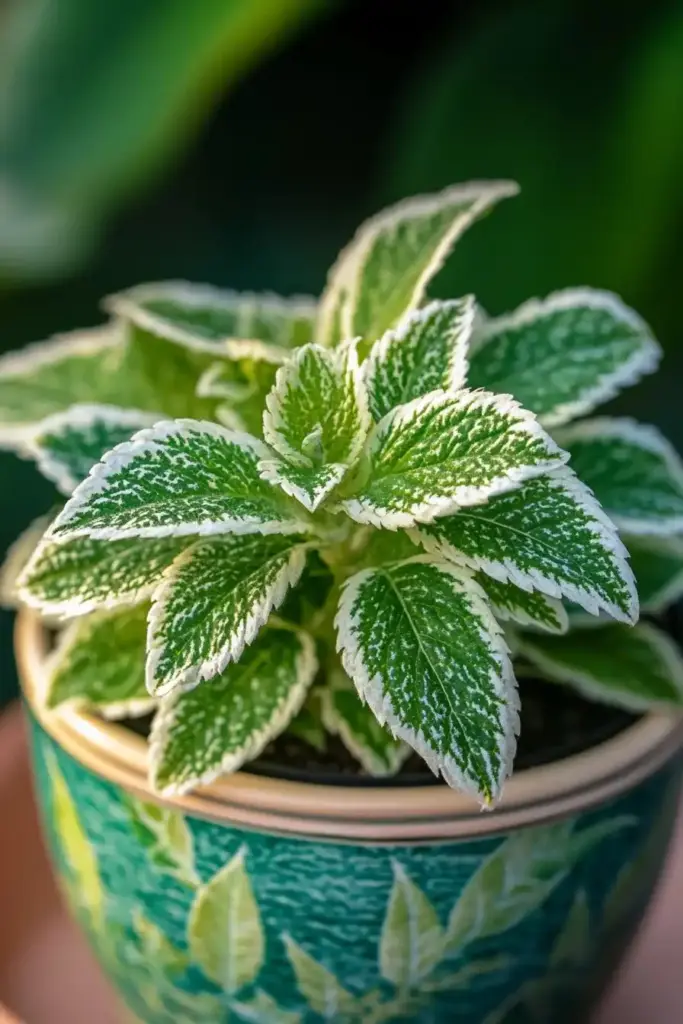
This variegated mint is a visual treat with its white-edged leaves and woolly texture. As a member of the mint family, it’s naturally rich in essential oils that mosquitoes dislike. Pineapple mint offers a sweeter aroma than standard peppermint, and its appearance brightens up the pot.
- Why it works: Minty essential oils repel mosquitoes
- Planting tip: Keep it contained—mint can spread aggressively
- Bonus: Crushed leaves smell amazing and are great in summer drinks
4. Flossflower (Ageratum ‘Artist Blue’)
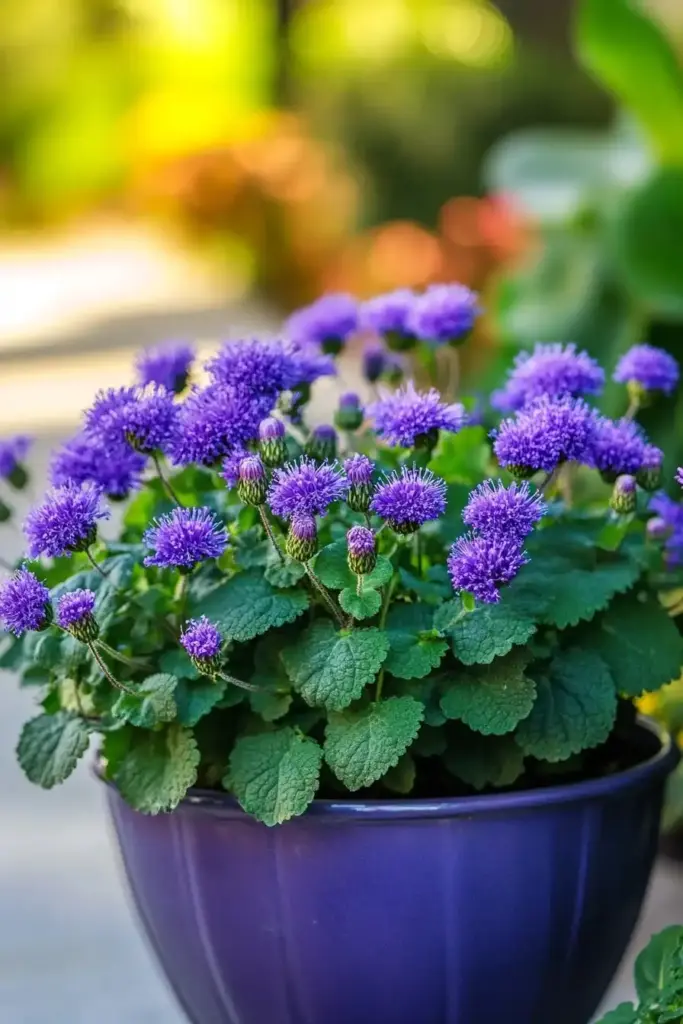
Flossflower introduces cool tones and unique texture to your container. It contains coumarin, an ingredient in many commercial repellents. Though its mosquito-repelling power is debated, its presence adds extra visual interest.
- Why it works: Contains coumarin, a mosquito-deterring compound
- Planting tip: Ideal for borders and mixed containers
- Bonus: Soft, fluffy blooms attract pollinators, not pests
5. Oregano (Origanum vulgare ‘Hot & Spicy’)
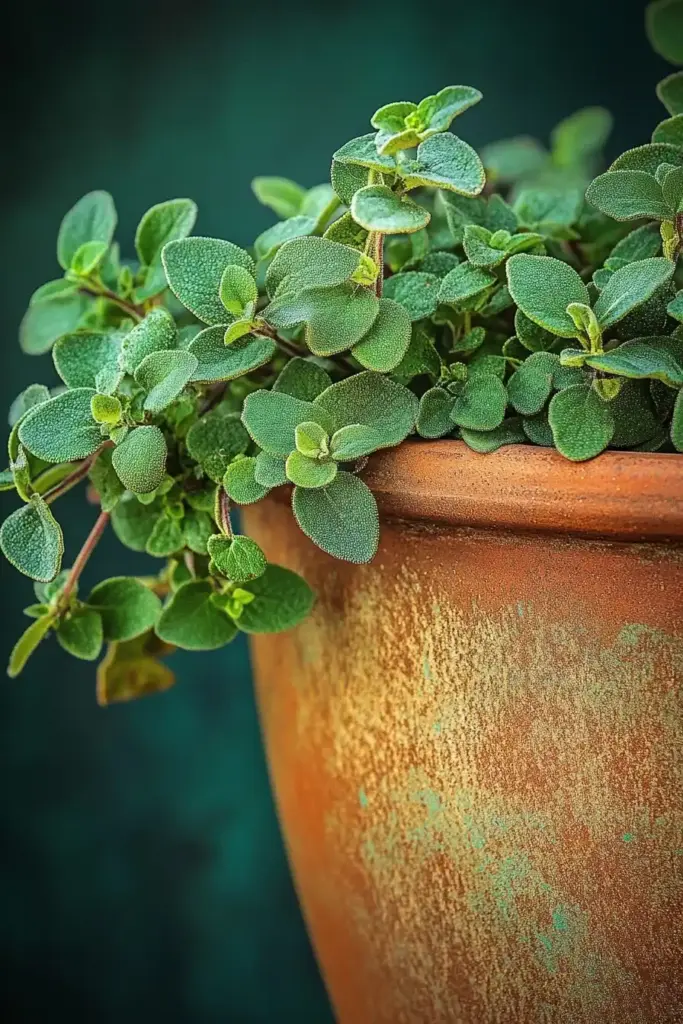
Oregano isn’t just for cooking—it’s also a stealthy mosquito repeller. This spicy, aromatic herb grows in bushy clusters with trailing stems that will eventually spill over your planter, softening the edges and adding movement.
- Why it works: Strong, spicy aroma wards off pests
- Planting tip: Thrives in full sun and well-drained soil
- Bonus: Pinch off leaves to flavor your meals fresh from the garden
6. Lemon Balm (Melissa officinalis)
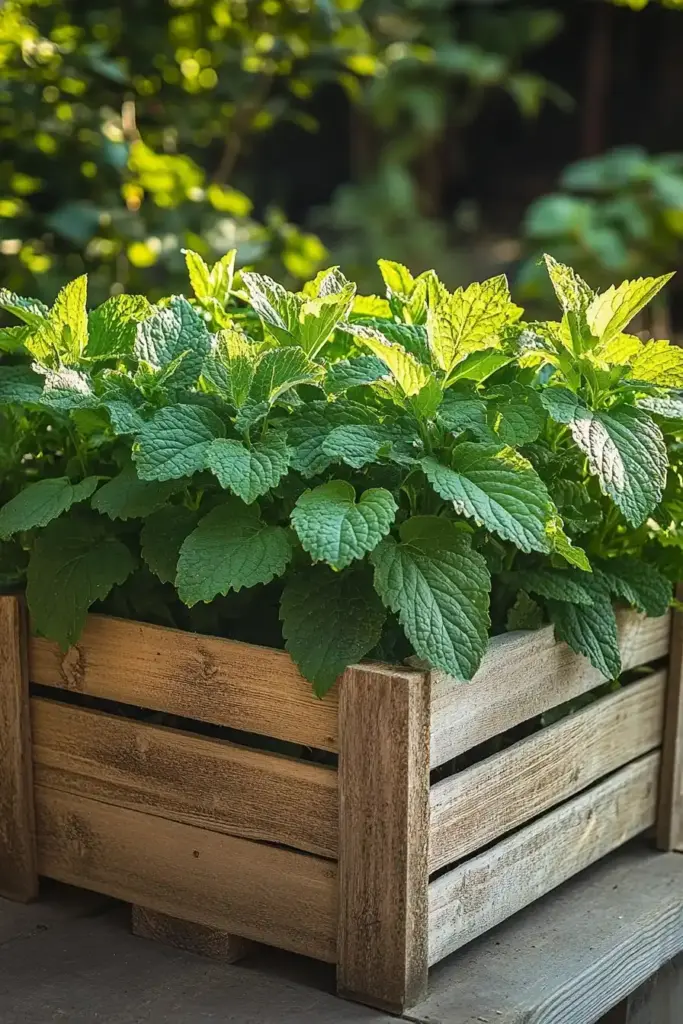
Lemon balm boasts a crisp, lemony scent that mosquitoes hate. It’s one of the most fragrant options available and easy to grow—even for beginners. Just be mindful: it grows fast and can be invasive if left unchecked.
- Why it works: High in citronellal, a known mosquito deterrent
- Planting tip: Ideal in containers to control its spread
- Bonus: Gently crush a leaf and rub it on your skin for quick protection
7. Thai Basil (Ocimum basilicum var. thyrsiflora)
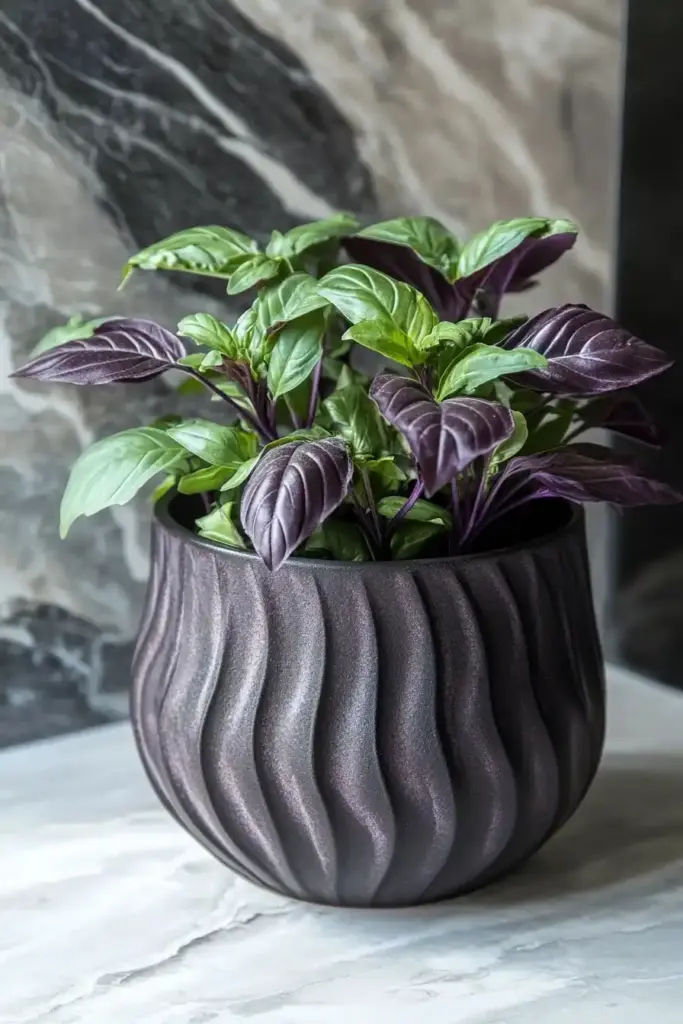
Thai basil offers a deep green leaf with hints of purple, adding an ornamental touch to your garden. Its anise-like fragrance is part of what makes it effective against mosquitoes, and it’s just as tasty as it is useful.
- Why it works: Basil varieties are known mosquito deterrents
- Planting tip: Pinch back flowers to encourage leaf growth
- Bonus: Perfect for adding depth to Southeast Asian dishes
💡 Tip: Got extra basil? Turn it into pesto or toss it in a coconut curry for a culinary treat.
8. Lemon Thyme (Thymus citriodorus)
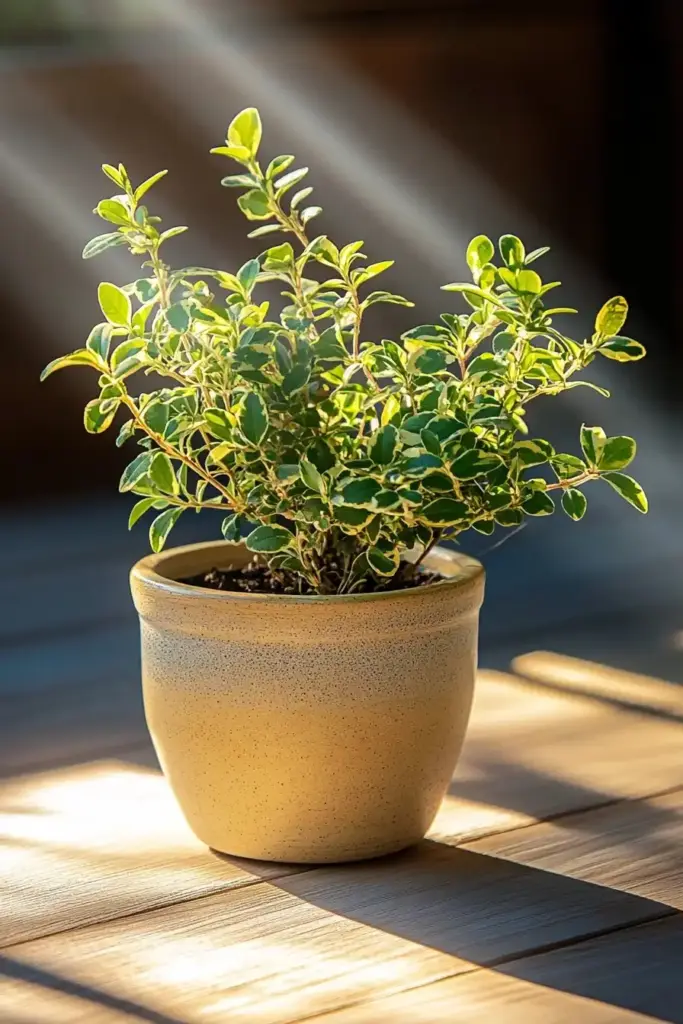
Don’t overlook thyme—it’s low-growing, drought-tolerant, and beautifully aromatic. Lemon thyme, in particular, adds a citrusy edge to your container with variegated yellow-green leaves that pop against darker plants.
- Why it works: Contains insect-repelling essential oils
- Planting tip: Trim regularly to encourage dense, bushy growth
- Bonus: Excellent in marinades, teas, and infused oils
🌞 Should You Add Citronella Geraniums?
While marketed as a “mosquito plant,” citronella-scented geraniums (Pelargonium citrosum) don’t actually offer much mosquito protection. These pretty annuals do emit a citrus aroma, but unless the leaves are crushed or heavily disturbed, they release little of the citronella oil mosquitoes actually dislike.
- Bottom line: They’re a gorgeous addition to your garden, but don’t rely on them for repelling insects.
🏡 Placement Tips for Maximum Mosquito Control
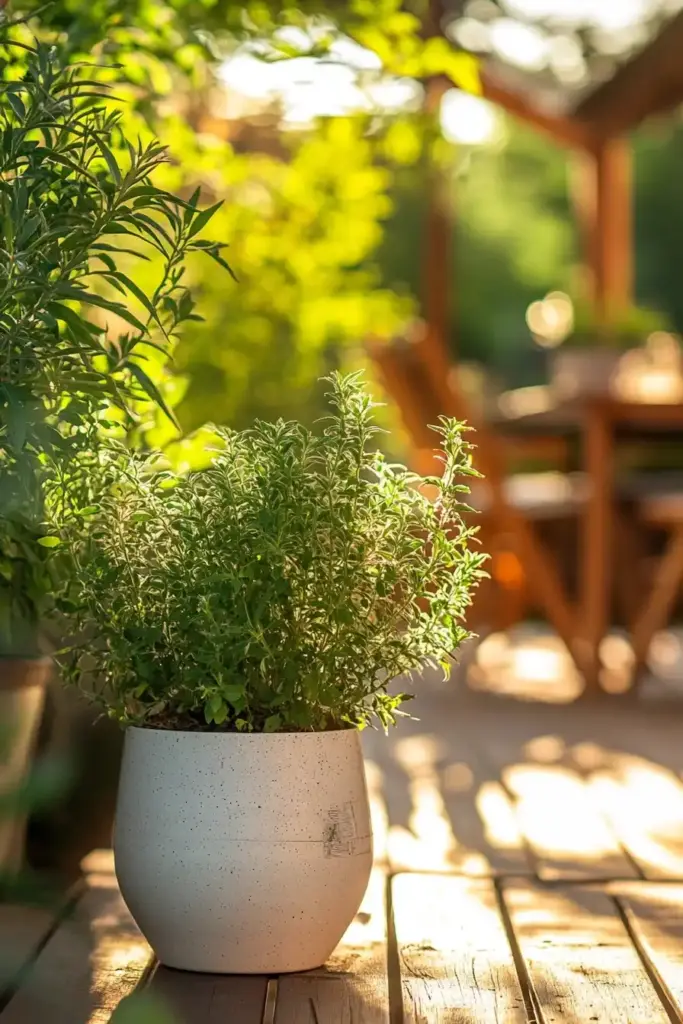
Creating a gorgeous planter full of mosquito repellent plants is step one—where you place it determines how effective it will be at keeping bugs away. To make the most of your natural defense system, keep these tips in mind:
✅ Place Your Planter Where People Gather
Put your mosquito-repelling container right where the action is—by outdoor seating areas, patios, decks, or near garden pathways. This creates a scented barrier that discourages mosquitoes from approaching.
- Pro tip: Position planters on either side of entryways, steps, or doorways. You can even create a small cluster of planters around a sitting area for a more concentrated effect.
✅ Ensure Full Sun for Most of These Plants
Most mosquito-repelling herbs and flowers love sunshine—especially basil, lavender, marigolds, and thyme. Choose a spot that gets at least 6–8 hours of sun daily so your plants thrive and release their natural oils more effectively.
- Container care tip: Use well-draining soil and a large enough pot to give roots room to grow. Group taller plants like lavender and lemon balm in the center or back, with lower growers like thyme and mint trailing over the sides.
✅ Encourage Scent Release
Many of these plants work best when their oils are disturbed and released. You can encourage this naturally by placing your planter in high-traffic areas where people (or pets) will brush against the foliage.
For an extra mosquito-fighting boost:
- Rub the leaves between your fingers and apply the oils to your skin
- Snip fresh herbs and scatter them around outdoor tables
- Add a sprig to drinks or centerpieces for double duty (decor + deterrent)
💡 Bonus Tips to Boost Your Natural Mosquito Defense

- Combine with other strategies: Burn citronella candles nearby or use natural essential oil sprays on furniture and cushions.
- Avoid standing water: Mosquitoes breed in stagnant water—be sure to empty saucers under pots and check for pooling water after rain.
- Try companion planting: If you already have a vegetable or flower garden, tuck some of these herbs into the beds to create a broader defense zone.
🌟 Final Thoughts: A Garden That’s Pretty and Practical
A well-crafted mosquito repellent container garden is a win-win: it enhances the look and smell of your outdoor space while giving mosquitoes a reason to buzz off. By choosing a smart combination of herbs and blooms—and placing your planter where it can shine—you’ll enjoy more comfortable summer nights without resorting to harsh chemicals or sprays.
So go ahead, dig in your hands, mix and match your favorites, and let your garden do double duty this season.

